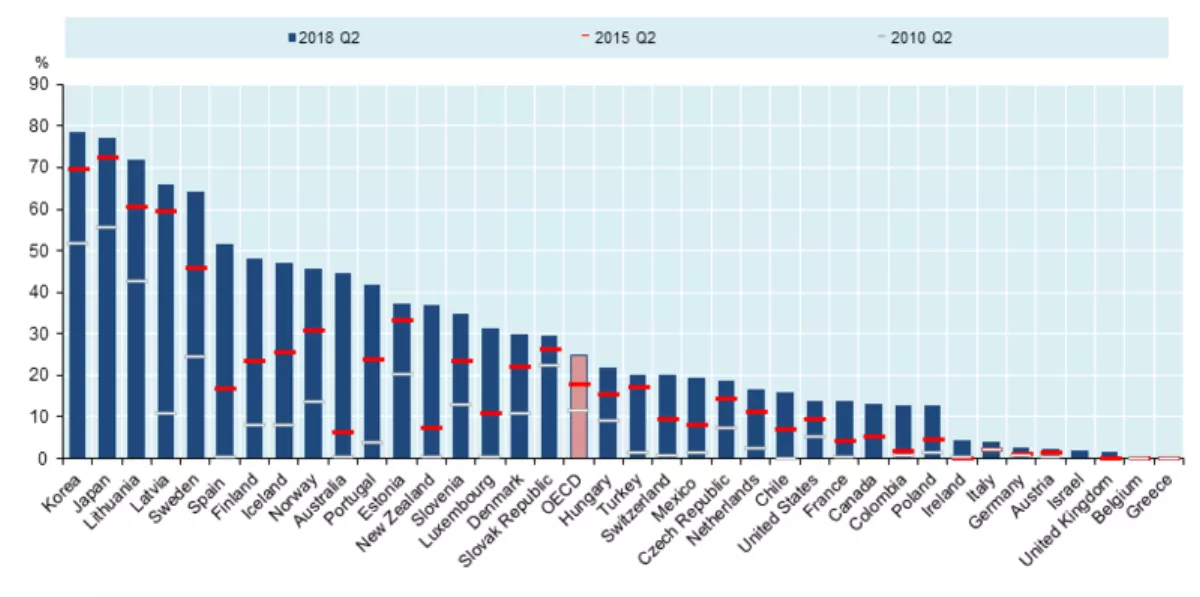
NZ among the world’s countries with the fastest internet
The share of high-speed fibre in fixed broadband Internet connections in OECD countries has risen to 25%, up from 12% eight years ago, according to an update to the OECD's broadband portal, with New Zealand punching well above its weight.
The latest data shows big differences between countries, however, with the share of fibre in total broadband ranging from above 70% in Korea, Japan and Lithuania to below 10% in Greece, Belgium, the United Kingdom, Israel, Austria, Germany, Italy and Ireland. The highest growth in fibre over the past year has been seen in Ireland, Belgium and Australia with fibre subscriptions up 218%, 71% and 70% respectively.
New Zealand remains above the OECD average with the share of fibre in total broadband sitting at 37%.
Overall, fixed broadband subscriptions in OECD countries totalled 411 million as of June 2018, up from 398 million a year earlier, and averaged 30.6 subscriptions per 100 inhabitants. Switzerland led the pack with a penetration rate of 47.5 subscriptions per 100 people, followed by Denmark (43.4%), France (42.9%), the Netherlands (42.7%) and Norway (41.2%).

DSL is still the prevalent fixed broadband technology, making up 38% of fixed broadband subscriptions in the OECD area, but continues to be gradually replaced by fibre. DSL subscriptions were down 8% in the year to June 2018 while fibre subscriptions rose by 15%. Cable subscriptions, up 3.9% on the year, made up most of the rest at 33% of total broadband.
Mobile broadband continued its rapid expansion with an additional 98 million subscriptions, a rise of 7.4%, in the year to June 2018. This takes mobile broadband penetration to above 106% in the OECD area. Mobile broadband penetration is highest in Japan, Finland, Estonia, the United States and Australia, with subscriptions per 100 inhabitants at 168%, 155%, 146%, 137% and 136% respectively.
Data on machine-to-machine (M2M) communications show that Sweden, New Zealand, Norway and the United States remain the leaders in the number of M2M SIM cards in use per 100 inhabitants.
Sweden counts 125 M2M SIM cards per 100 inhabitants – a much higher level than most OECD countries that provided data due in part to use of these SIM cards in other countries by a Swedish operator. Overall, M2M/embedded mobile cellular subscriptions grew by over 38% in the last year in countries where the data was available.
The OECD broadband statistics now cover 37 countries including new members Colombia and Lithuania. Please note that historical OECD totals, averages and growth rates have been adjusted to include Colombia and Lithuania.

